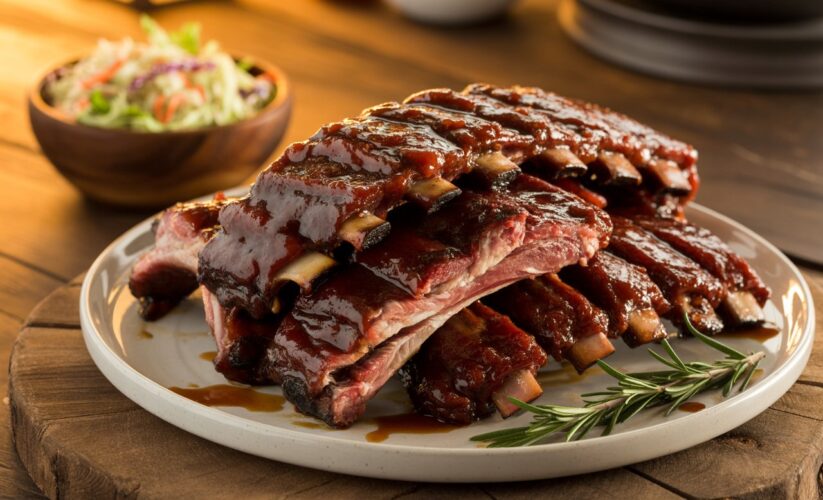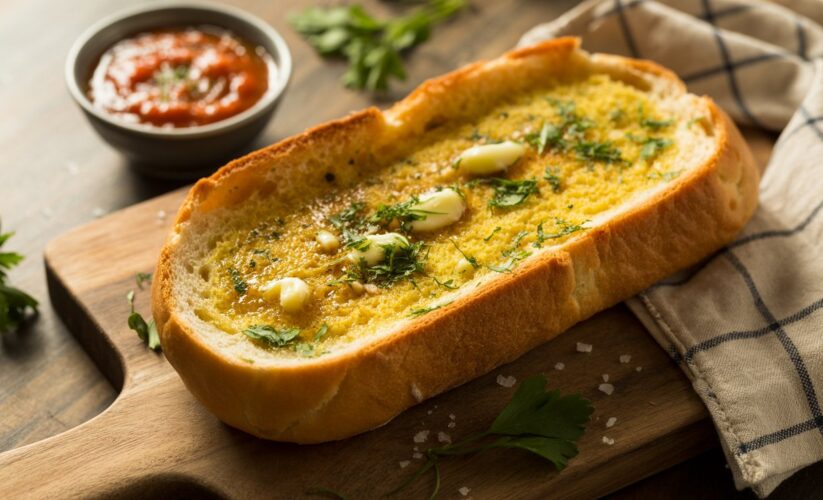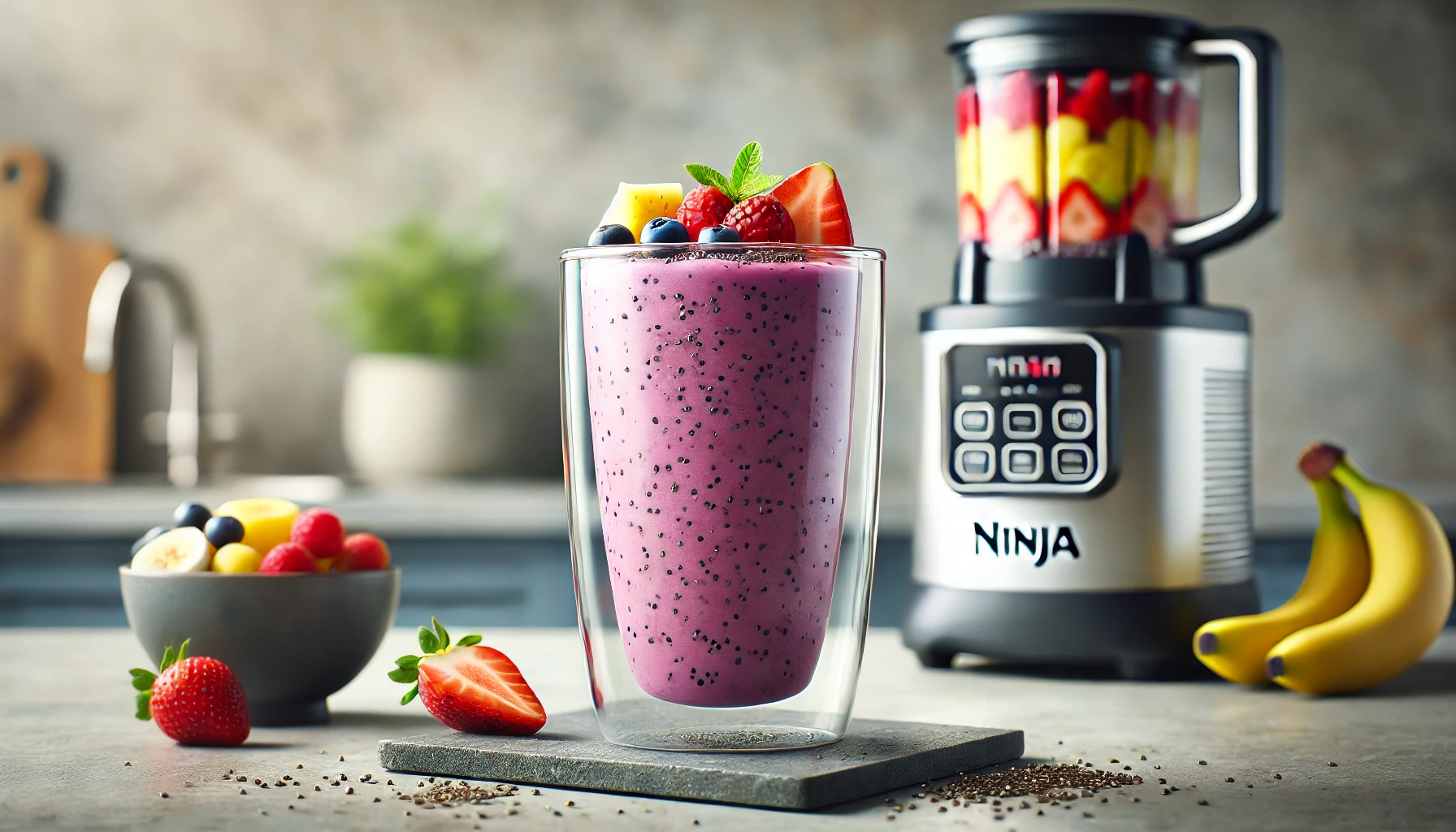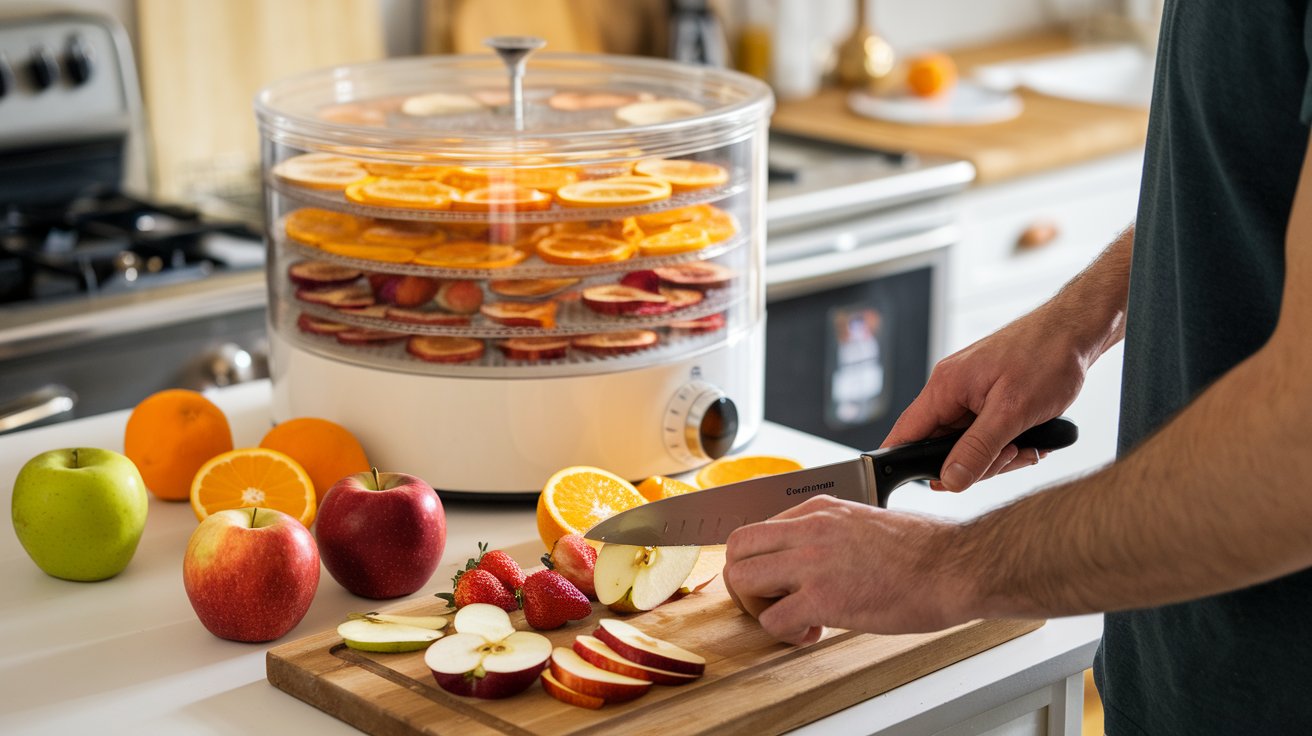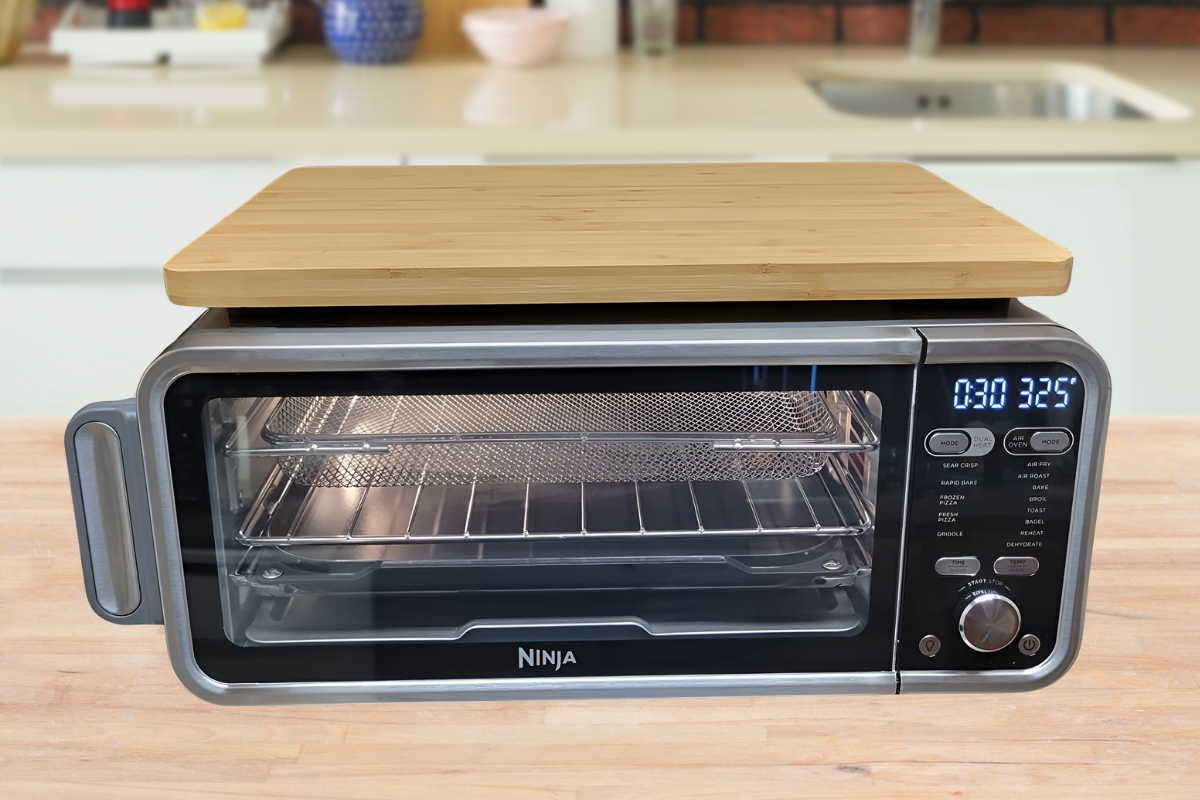
How to Clean Ninja Woodfire Grill
The sizzle of a perfectly seared steak, the aromatic wisps of wood smoke curling into the evening air, the anticipation of that first bite infused with authentic wood-fired flavor—your Ninja Woodfire Grill makes these moments possible. But behind every exceptional outdoor cooking experience lies a simple truth: proper maintenance determines whether your grill delivers consistent, restaurant-quality results or disappointing, inconsistent performance.
Many outdoor cooking enthusiasts struggle with knowing exactly how to care for this unique combination of traditional grilling and wood-pellet technology. The good news? Mastering the cleaning process is far simpler than you might expect, and the rewards—better flavors, longer equipment life, and safer cooking—make every effort worthwhile.
“A clean grill is the foundation of great outdoor cooking. Regular maintenance isn’t just about aesthetics—it’s about preserving the authentic wood-fired flavors that make every meal memorable while protecting your investment for years to come.”
— Outdoor Cooking Equipment Manufacturers Association
Key Takeaways
- Regular cleaning after each use prevents stubborn buildup and extends your grill’s lifespan
- The Ninja Woodfire Grill requires attention to multiple components: cooking grate, pellet hopper, grease tray, and exterior surfaces
- Natural cleaning solutions and proper tools protect the grill’s finish while ensuring food safety
- A consistent maintenance schedule (daily, weekly, and seasonal) keeps your grill performing optimally
- Proper storage and protective measures prevent weather damage and rust formation
- MASTER GRILL, BBQ SMOKER, & AIR FRYER: All In one with 100% authentic smoky flavors.
- MASTER GRILL: Get all the performance of a full-size propane grill with the same char and searing.
- FOOLPROOF BBQ SMOKER: Create authentic BBQ bark and flavor fast and easy with just 1/2 cup of pellets.
- 4-in-1 Functionality: Combines a Woodfire Grill, BBQ Smoker, Outdoor Air Fryer, and Oven in one compact, electric unit. Infuse every dish with 100% real woodfire flavor using authentic wood pellets.
- XL Capacity for Entertaining: Cook for a crowd with 180 sq. in. of grill space with 30% more than the original Ninja outdoor grill. Perfectly fits 2 full racks of ribs, 10 burgers, 4 lbs. of wings, 2 whole chickens, or a 10-lb brisket.
- Smart Built-In Thermometer: Take the guesswork out of grilling with a precision temperature probe that monitors doneness in real time and alerts you when your food is perfectly cooked.
- MASTER GRILL, BBQ SMOKER, & AIR FRYER: All in one with 100% real smoky flavor.
- ELECTRIC MASTER GRILL: Get all the performance of a full-size propane grill* with the same char and searing, with 1760 Watts of fully electric power. *compared to a Weber spirit
- FOOLPROOF BBQ SMOKER: Create authentic BBQ bark and flavor fast and easy with just 1/2 cup of pellets.
Understanding Your Woodfire Grill’s Cleaning Needs
The Ninja Woodfire Grill combines traditional grilling with wood-fired flavor technology, creating a unique cooking experience that demands specific care. Unlike conventional grills, this equipment features a pellet system that introduces wood smoke, adding complexity to the cleaning process. Ash accumulation, grease management, and pellet residue all require attention to maintain optimal performance.
Many outdoor cooking enthusiasts discover that neglecting regular maintenance leads to diminished smoke flavor, uneven heating, and potentially unsafe cooking conditions. The good news? With the right approach, cleaning becomes second nature—a small investment of time that pays dividends in flavor quality and equipment longevity.
The Emotional Journey of Grill Maintenance
There’s something deeply satisfying about maintaining outdoor cooking equipment. It’s not just about cleanliness; it’s about respect for the craft, preparation for memorable meals, and the pride that comes from well-maintained gear. Every time you clean your grill, you’re setting the stage for the next gathering, the next perfectly seared steak, or the next batch of smoke-kissed vegetables that will have everyone asking for seconds.
The transformation from a hesitant beginner to a confident grill master often hinges on these maintenance moments. When you understand how each component works and why it needs care, the entire cooking experience becomes more intentional and rewarding.
Essential Cleaning Supplies and Preparation
Gathering Your Arsenal
Before diving into the cleaning process, assembling the right tools makes all the difference. You’ll need:
- A high-quality grill brush with brass or stainless steel bristles
- Soft microfiber cloths or paper towels
- Warm soapy water (mild dish soap works perfectly)
- A plastic scraper or putty knife for stubborn residue
- A shop vacuum or ash vacuum for pellet debris
- Food-safe degreaser for heavy buildup
- White vinegar for natural cleaning power
- Bucket or basin for soaking removable parts
Having everything within reach transforms a potentially frustrating task into a streamlined process. There’s no need to run back and forth searching for supplies when you’re elbow-deep in grill maintenance.
Safety First: Cooling and Disconnection
Never attempt to clean a hot grill. This might seem obvious, but impatience has led to many unfortunate burns. Allow your Ninja Woodfire Grill to cool completely—at least 30-45 minutes after your last use. Disconnect the power source if applicable, and ensure the pellet hopper has cooled down entirely before handling any components.
The Post-Cook Quick Clean: Your Daily Routine
Immediate Grate Maintenance
Right after cooking, while the grill is still warm (but not hot), give the cooking grate a quick brush. The residual heat helps loosen food particles, making this five-minute task remarkably effective. Use long, sweeping strokes across the grate, pushing debris toward the grease tray below.
This simple habit prevents buildup from carbonizing and becoming nearly impossible to remove later. Think of it as washing dishes right after dinner—the effort required is minimal compared to scrubbing dried, stuck-on food the next day.
Grease Management
The Ninja Woodfire Grill’s grease management system is designed for easy maintenance, but only if you stay on top of it. After each cooking session, check the grease tray. If there’s significant accumulation, remove the tray once the grill has cooled and dispose of the grease properly. Line the tray with aluminum foil before your next cook to make cleanup even easier.
Grease fires are preventable, and regular tray maintenance is your first line of defense. Don’t let convenience cooking turn into a hazardous situation through neglect.
The Deep Clean: Weekly Maintenance Ritual
Dismantling and Soaking
Once a week, or after particularly messy cooking sessions, commit to a thorough cleaning. Remove all accessible components: the cooking grate, warming rack (if applicable), grease tray, and any removable panels or shields.
Soak these parts in warm, soapy water for 15-20 minutes. This soaking time is crucial—it allows the cleaner to penetrate carbonized residue and grease, doing much of the heavy lifting for you. While components soak, you can tackle other cleaning tasks.
Interior Cleaning: The Heart of the Matter
The interior of your Ninja Woodfire Grill tells the story of your recent culinary adventures. Smoke residue, grease splatter, and ash all accumulate on interior surfaces. Using a plastic scraper, gently remove any large chunks of carbonized material from the interior walls and bottom.
For stubborn spots, create a paste using baking soda and water. Apply this natural abrasive to problem areas, let it sit for 10 minutes, then scrub with a non-abrasive pad. The beauty of this method? It’s tough on grime but gentle on your grill’s finish.
Pay special attention to the area around the pellet hopper and the smoke box. These zones see significant residue accumulation and directly impact flavor quality. A clogged or dirty smoke system produces inconsistent results and can even create off-flavors in your food.
The Pellet Hopper: Overlooked but Critical
Wood pellets are hygroscopic—they absorb moisture from the air. Before cleaning, empty any remaining pellets from the hopper. Check for signs of moisture damage, sawdust buildup, or foreign debris. Vacuum out any dust or small particles using a shop vac.
Wipe down the hopper’s interior with a dry cloth. Never introduce water or cleaning solutions here unless you’re prepared to wait for complete drying before reloading pellets. Moisture contamination in your pellet supply leads to poor combustion, excessive smoke, and potential damage to the auger system.
Exterior Care: The First Impression
The outside of your grill faces weather, fingerprints, grease splatter, and whatever else outdoor environments throw at it. Use a degreaser or simple soap and water solution to wipe down all exterior surfaces. For stainless steel components, wipe in the direction of the grain to avoid scratching.
A clean exterior isn’t just about aesthetics—it’s about protecting your investment from corrosion and environmental damage. Consider this the final touch that says, “I care about my cooking equipment.”
Tackling Common Cleaning Challenges
Stubborn Carbonized Buildup
Sometimes, despite your best efforts, you encounter residue that simply won’t budge. Don’t reach for harsh chemical cleaners that might leave toxic residue or damage protective coatings. Instead, try this approach:
Apply white vinegar directly to the problem area and let it sit for 15-20 minutes. The acidity helps break down carbon deposits. Follow up with a paste of baking soda and water for gentle abrasive action. This one-two punch handles most stubborn situations without compromising food safety or grill integrity.
Rust Formation and Prevention
Discovering rust on your outdoor cooking equipment can feel disheartening, but it’s usually addressable if caught early. Light surface rust responds well to gentle scrubbing with steel wool and white vinegar. For more significant rust, you might need a wire brush and rust-removing product designed for grills.
Prevention beats treatment every time. After cleaning, ensure all components are completely dry before reassembly. Apply a thin coat of cooking oil to cast iron or steel grates to create a protective barrier against moisture. If storing your grill long-term, consider removing the cooking grate and storing it indoors.
Grease Fire Aftermath
If you’ve experienced a grease fire (thankfully rare with proper maintenance), the cleanup requires extra attention. Once everything has completely cooled, remove all loose debris and ash. You may need to soak components overnight to loosen heavy carbonization. Inspect all parts for damage—intense heat can warp metal or damage seals.
This situation serves as a powerful reminder: regular cleaning isn’t just about performance; it’s about safety.
Weather-Related Challenges
Outdoor equipment faces unique challenges. Rain can create rust opportunities, while extreme heat can bake on residue. Sun exposure can fade and damage control knobs and gaskets over time.
After unexpected rain exposure, dry your grill thoroughly as soon as possible. Remove any standing water from the firebox or grease tray. In harsh climates, invest in a quality grill cover that allows ventilation while protecting from direct weather exposure.
Seasonal Deep Cleaning: The Complete Overhaul
Spring Revival
After winter storage or before the peak grilling season, conduct a comprehensive inspection and cleaning. This goes beyond regular maintenance:
Remove every accessible component and clean thoroughly. Inspect gaskets, seals, and door hinges for wear. Check electrical connections (if applicable) for corrosion or damage. Test all temperature controls and ensure they respond accurately.
Clean out any nesting material if insects or rodents have discovered your grill during storage. Yes, this happens more often than people realize, and it’s essential to address before first use.
Fall Preparation
As outdoor cooking season winds down, preparing your grill for storage or reduced use prevents springtime disappointments. Conduct a thorough cleaning, paying extra attention to removing all grease and food particles that might attract pests.
Empty the pellet hopper completely and vacuum out any remaining dust. Pellets left over winter can absorb moisture and become unusable, potentially causing auger jams when you fire up the grill again.
Apply a thin coat of cooking oil to metal surfaces to prevent rust formation. If storing indoors, ensure the grill is completely dry first. If leaving outdoors, invest in a breathable, weather-resistant cover.
The Science Behind Smoke Flavor Preservation
Understanding why cleanliness matters helps maintain motivation for this routine maintenance. The Ninja Woodfire Grill creates its signature flavor through controlled wood pellet combustion. When ash and residue accumulate, they interfere with airflow, leading to:
- Inconsistent temperature control
- Reduced smoke production
- Off-flavors from burning old grease instead of clean wood
- Longer preheating times
- Potential safety hazards
A clean grill doesn’t just look better—it performs better, delivering the authentic wood-fired flavor that makes this equipment special.
Building Your Maintenance Schedule
After Every Cook (5-10 minutes)
- Brush cooking grate while warm
- Empty grease tray if necessary
- Quick exterior wipe-down
- Check pellet level
Weekly Deep Clean (30-45 minutes)
- Remove and soak all removable parts
- Clean interior surfaces thoroughly
- Vacuum pellet hopper and auger area
- Inspect for wear or damage
- Full exterior cleaning
Monthly Inspection (15-20 minutes)
- Check gaskets and seals
- Inspect pellet auger function
- Test temperature accuracy
- Clean behind fixed panels if accessible
- Apply protective oil to grates
Seasonal Overhaul (1-2 hours)
- Complete disassembly and deep clean
- Inspect all mechanical components
- Replace worn parts
- Professional service if needed
- Prepare for storage or next season
Beyond Cleaning: Maximizing Grill Longevity
Proper Usage Habits
Prevention is always easier than correction. Preheat your grill properly before cooking—this helps burn off some residue naturally. Use appropriate cooking temperatures for different foods; excessive heat accelerates wear and creates more carbonization.
Consider using grill mats or aluminum foil for particularly messy foods. While purists might object, protecting your grill from excessive mess can be a practical choice for certain dishes.
Quality Pellet Selection
The quality of wood pellets directly impacts both flavor and cleanliness. Premium pellets produce less ash and cleaner combustion. Avoid pellets with excessive sawdust or those that have been exposed to moisture.
Store pellets in a dry, sealed container to prevent moisture absorption. This simple step reduces ash production and maintains consistent burning characteristics.
Environmental Considerations
Where you position your grill matters. Excessive exposure to rain, direct sunlight, or harsh winds accelerates wear. If possible, provide some overhead protection while maintaining adequate ventilation.
In coastal areas, salt air creates particularly aggressive corrosion conditions. More frequent cleaning and protective measures become essential to combat this environmental challenge.
Troubleshooting Performance Issues
Temperature Inconsistency
If your grill struggles to maintain consistent temperatures after cleaning, check for:
- Ash buildup blocking airflow paths
- Damaged or warped heat diffusers
- Pellet quality issues
- Auger malfunction preventing proper pellet feed
Reduced Smoke Production
Disappointing smoke flavor often traces back to:
- Clogged smoke box or chimney
- Old or moisture-damaged pellets
- Insufficient preheating time
- Blocked air intake vents
Uneven Heating
Hot spots or cold zones typically result from:
- Grease buildup blocking heat distribution
- Damaged heat diffusers or shields
- Misaligned internal components after cleaning
Each of these issues underscores the interconnection between cleanliness and performance. Regular maintenance prevents most problems before they develop.
The Broader Impact: From Grill to Lifestyle
Maintaining outdoor cooking equipment extends beyond the immediate task. This practice cultivates patience, attention to detail, and respect for tools and ingredients. These qualities transfer to the actual cooking process, resulting in better meals and more enjoyable experiences.
There’s a meditative quality to maintenance routines. The rhythmic motion of brushing grates, the satisfaction of seeing grime disappear, the sense of completion when everything gleams clean—these small moments contribute to overall wellbeing and stress relief.
For those who entertain frequently, a well-maintained grill provides confidence. There’s no apologizing for smoke-tainted flavors or worrying about grease fires when guests arrive. Instead, you can focus on hospitality and creating memorable meals.
Celebrating Small Victories
Every successful cleaning session deserves recognition. Maybe it’s noticing how much easier this week’s maintenance was compared to last month. Perhaps it’s the first cook after a deep clean, when flavors are bright and pure. These moments validate the effort invested.
Don’t underestimate the pride that comes from properly maintained equipment. When neighbors compliment your cooking or family members request their favorite grilled dish, part of that success traces directly to your maintenance dedication.
Creating Your Personal Approach
While guidelines provide structure, the best maintenance routine is one you’ll actually follow consistently. Some people prefer cleaning immediately after cooking, while others wait until the next day when everything has cooled completely. Neither approach is wrong—what matters is regularity.
Experiment with different cleaning solutions and techniques to find what works best for your specific situation. Hard water areas might benefit from vinegar rinses to prevent mineral deposits. High-humidity climates might require more frequent rust prevention measures.
Consider keeping a maintenance log. Note when you deep clean, replace parts, or notice changes in performance. Over time, patterns emerge that help you optimize your routine and anticipate needs before they become problems.
Community and Shared Knowledge
Outdoor cooking creates natural opportunities for connection. Don’t hesitate to share maintenance tips with fellow grill enthusiasts or ask questions when facing unfamiliar challenges. Online communities, local meetups, and manufacturer support channels provide valuable resources.
Learning from others’ experiences accelerates your own mastery. That creative solution someone discovered for stubborn residue might save you hours of frustration. The warning about a specific cleaning product that damaged someone’s grill finish might protect your investment.
The Path Forward: Continuous Improvement
Grill maintenance skills develop over time. Early cleaning sessions might feel awkward or time-consuming, but efficiency comes with practice. What once took an hour eventually becomes a 20-minute routine performed almost automatically.
As you gain experience, you’ll develop instincts about when your grill needs attention. You’ll notice subtle changes in performance that signal cleaning needs before they become obvious. This preventive awareness represents mastery—the ability to maintain optimal conditions through consistent, timely intervention.
Practical Wisdom for Every Stage
Whether you just unboxed your Ninja Woodfire Grill or you’ve been cooking with it for years, improvement opportunities always exist. Beginners should focus on establishing basic routines before worrying about advanced techniques. Experienced users might explore more efficient methods or specialized tools that address specific challenges.
Don’t let perfection become the enemy of progress. A quick, imperfect cleaning beats no cleaning every time. Build habits gradually, adding complexity as basic routines become automatic.
Words of Encouragement
The journey to maintaining pristine outdoor cooking equipment isn’t always linear. Some weeks, life gets busy and maintenance slips. Stubborn problems sometimes resist your best efforts. These challenges are normal—they’re part of the process, not indicators of failure.
What matters is returning to consistent care, learning from setbacks, and recognizing that every cleaning session moves you closer to effortless maintenance and exceptional cooking results. Your Ninja Woodfire Grill is designed to provide years of service when properly maintained. The time you invest now pays dividends in performance, safety, and culinary success.
Start small if you need to. Master the post-cook quick clean, then expand to weekly maintenance as it becomes habitual. Before you know it, comprehensive grill care will feel natural—just another aspect of the outdoor cooking lifestyle you’ve embraced.
Your next meal on a perfectly maintained grill awaits. The improved flavors, consistent performance, and peace of mind that comes from knowing your equipment is in optimal condition—these rewards are worth every moment spent on proper care. Transform maintenance from a chore into a practice you approach with confidence and even satisfaction, knowing each cleaning session enhances every future cooking experience.
Conclusion
Cleaning your Ninja Woodfire Grill is more than maintenance—it’s an investment in countless future meals, gatherings, and culinary experiences. By establishing consistent cleaning routines, using appropriate techniques, and addressing challenges promptly, you ensure optimal performance and extend your grill’s lifespan significantly.
The transformation from viewing cleaning as a burden to recognizing it as essential practice happens gradually, through repeated experience and the tangible results it produces. Every properly maintained cooking session reinforces the value of these efforts, creating a positive cycle of care and reward.
Remember that perfect maintenance doesn’t exist—only consistent effort and continuous improvement. Your approach will evolve as you gain experience, discover what works best for your specific situation, and adapt to changing needs. The goal isn’t perfection; it’s developing sustainable habits that keep your grill performing at its best while fitting naturally into your lifestyle.
Whether you’re preparing for a casual weeknight dinner or a major outdoor gathering, a well-maintained Ninja Woodfire Grill provides confidence, consistent results, and the authentic wood-fired flavors that make outdoor cooking special. Start with small, manageable steps, celebrate your progress, and watch as proper maintenance becomes second nature—an integral part of your outdoor cooking journey that enhances every aspect of the experience.
Frequently Asked Questions
How often should I deep clean my Ninja Woodfire Grill?
Conduct a thorough deep clean at least once weekly if you use your grill regularly (3-4 times per week). For occasional users, a deep clean after every 5-6 cooking sessions works well. Additionally, perform seasonal overhauls before peak grilling season and before extended storage periods. The frequency ultimately depends on usage intensity and the types of foods you typically cook—fattier meats require more frequent attention than vegetables or lean proteins.
Can I use a pressure washer to clean my Ninja Woodfire Grill?
Avoid using pressure washers on your Ninja Woodfire Grill. The high-pressure water can damage electrical components, force water into areas where it shouldn’t go, strip protective coatings, and damage gaskets or seals. Stick with hand cleaning methods using appropriate brushes, cloths, and cleaning solutions. The manual approach gives you better control and allows you to inspect components for wear or damage during the cleaning process.
What’s the best way to prevent rust on my grill?
Rust prevention requires multiple strategies: keep your grill dry by wiping down all surfaces after cleaning, apply a thin coat of cooking oil to cast iron and steel grates after each cleaning, use a breathable weather-resistant cover when not in use, empty the grease tray regularly to prevent moisture accumulation, and store the grill in a covered area if possible during harsh weather or long-term storage. For coastal areas with salt air, increase the frequency of these preventive measures.
My grill has a strong, unpleasant odor even after cleaning. What should I do?
Persistent odors usually indicate grease or food residue in hard-to-reach areas. Empty and clean the pellet hopper thoroughly, as old pellets can develop musty odors. Remove and soak the grease tray, even if it looks clean. Check behind heat shields and diffusers for hidden buildup. Run a “burn-off” cycle by heating the grill to maximum temperature for 15-20 minutes with the lid closed (without food), which helps carbonize residual material. If odors persist, consult the manufacturer as internal components might need professional servicing.
Is it safe to use oven cleaner on my Ninja Woodfire Grill?
Avoid using harsh chemical oven cleaners on your grill. These products contain caustic ingredients that can damage protective coatings, leave toxic residue that transfers to food, corrode metal components, and damage gaskets or seals. Instead, use food-safe degreasers specifically designed for grills, or stick with natural cleaning solutions like baking soda paste, white vinegar, and warm soapy water. These alternatives effectively clean without the risks associated with aggressive chemical cleaners while maintaining food safety standards.
Last update on 2025-10-14 / Affiliate links / Images from Amazon Product Advertising API
*We may earn a commission for purchases made using our links. Please see our disclosure to learn more.




